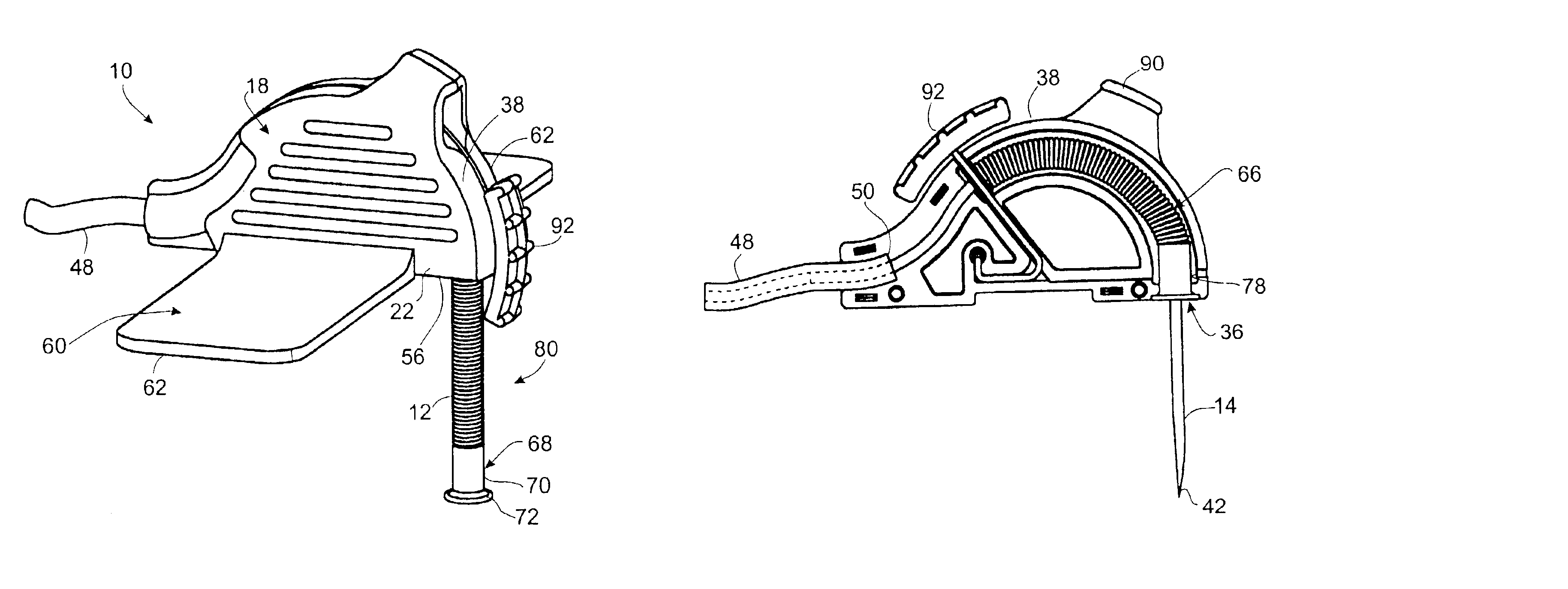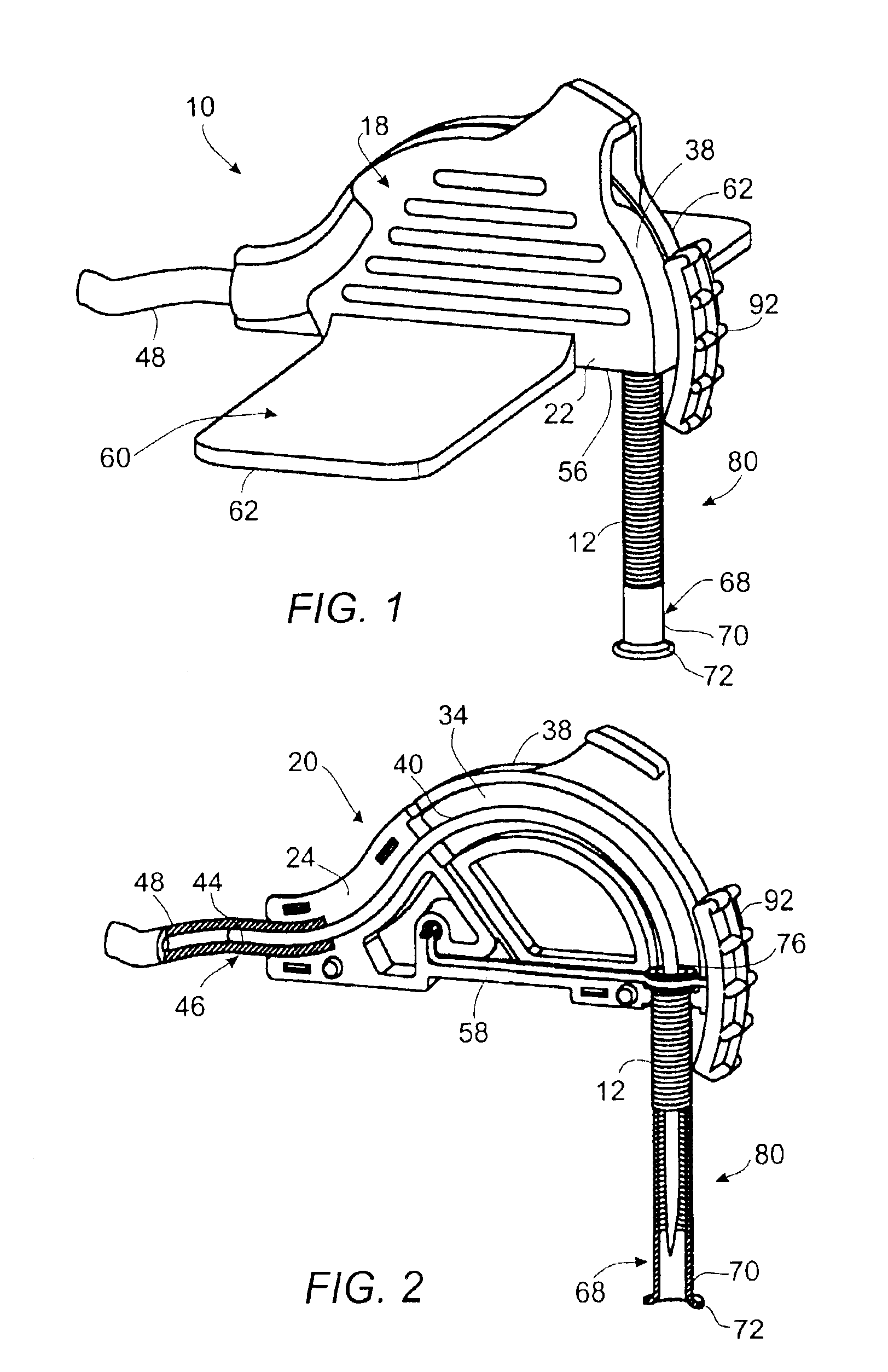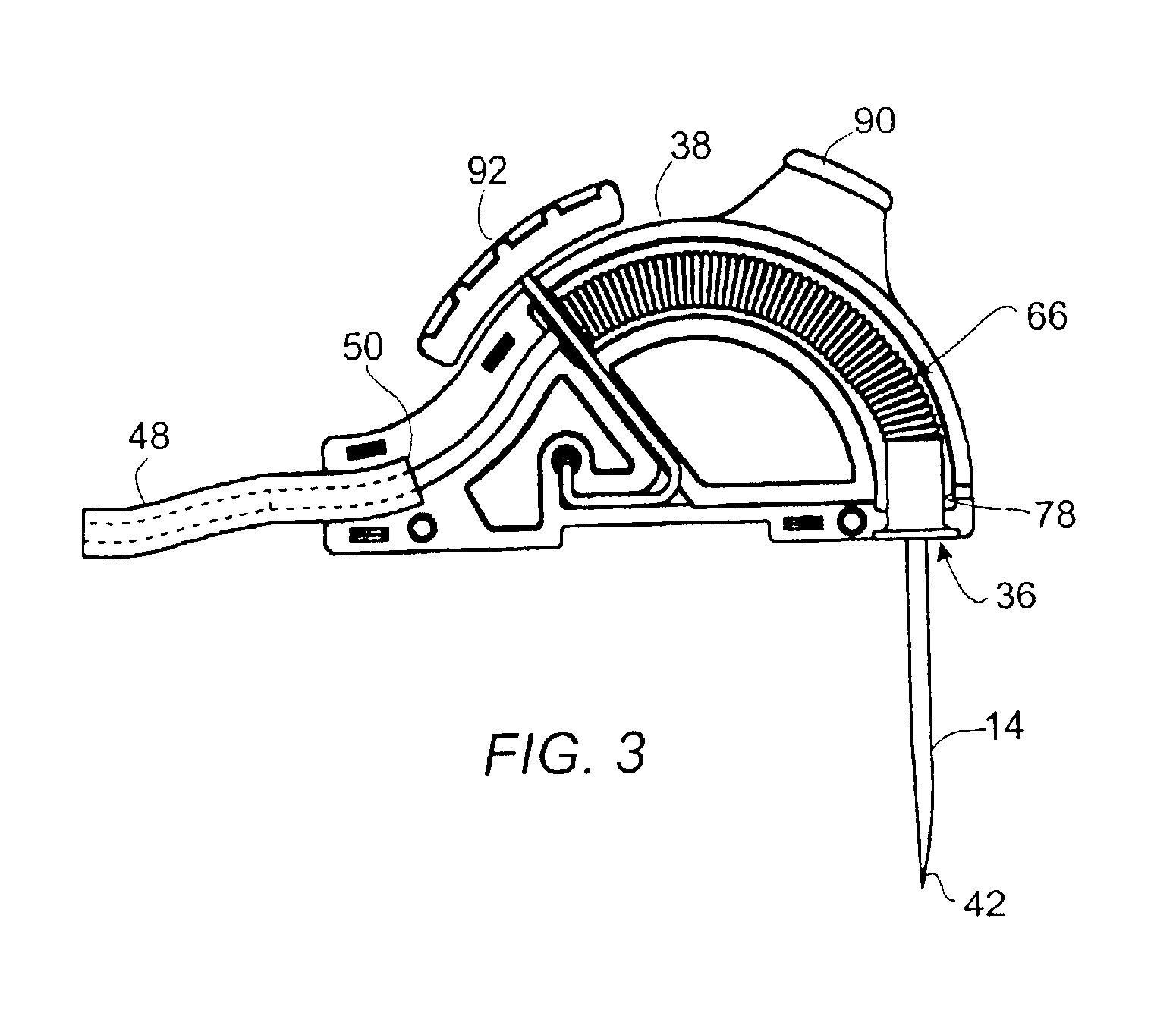Huber needle with anti-rebound safety mechanism
a safety mechanism and huber needle technology, applied in the field of medical needle devices, can solve the problems of huber needles being stuck on the huber needle rebound, requiring a large amount of force during huber needle withdrawal to overcome the resistance of the port's septum, and presenting a high risk of pathogen transmission, so as to prevent needle-stick injuries
- Summary
- Abstract
- Description
- Claims
- Application Information
AI Technical Summary
Benefits of technology
Problems solved by technology
Method used
Image
Examples
Embodiment Construction
Referring now to the drawings wherein the showings are for purposes of illustrating preferred embodiments of the present invention only, and not for purposes of limiting the same, FIG. 1 illustrates an active safety needle device 10 constructed in accordance with a preferred embodiment of the present invention. As indicated above, the present safety needle device 10 features a sheath assembly 12 which is outwardly deployable with respect to the distal needle portion 14, that is, the exposed portion of its affixed needle 16 which is used to access an IV port implanted underneath a patient's designated skin area (not shown).
As will be soon discussed, such active deployment of the sheath assembly 12 provides a tangible physical barrier around the distal needle portion 14 to protect a user from being inadvertently stuck by the needle 16, thereby preventing needle-stick injuries and all the risks associated therewith. Although the sheath assembly 12 is preferably used for Huber needle ap...
PUM
 Login to View More
Login to View More Abstract
Description
Claims
Application Information
 Login to View More
Login to View More - R&D
- Intellectual Property
- Life Sciences
- Materials
- Tech Scout
- Unparalleled Data Quality
- Higher Quality Content
- 60% Fewer Hallucinations
Browse by: Latest US Patents, China's latest patents, Technical Efficacy Thesaurus, Application Domain, Technology Topic, Popular Technical Reports.
© 2025 PatSnap. All rights reserved.Legal|Privacy policy|Modern Slavery Act Transparency Statement|Sitemap|About US| Contact US: help@patsnap.com



